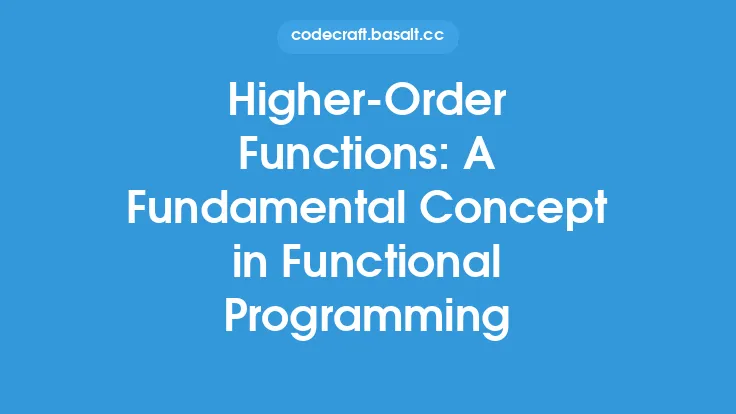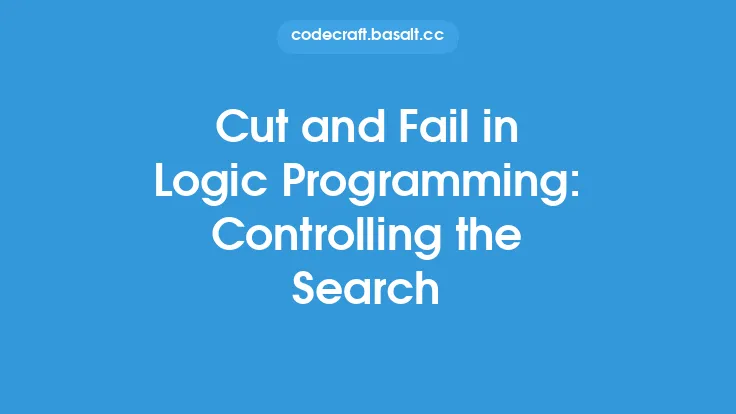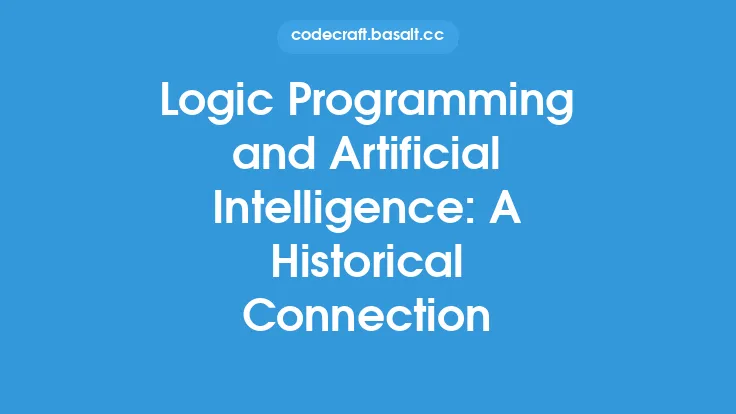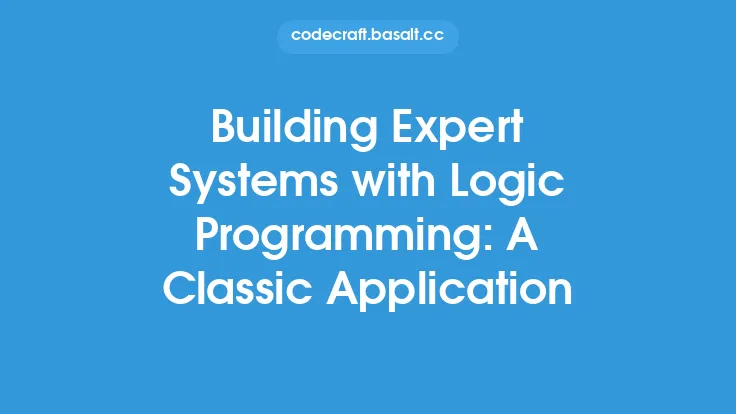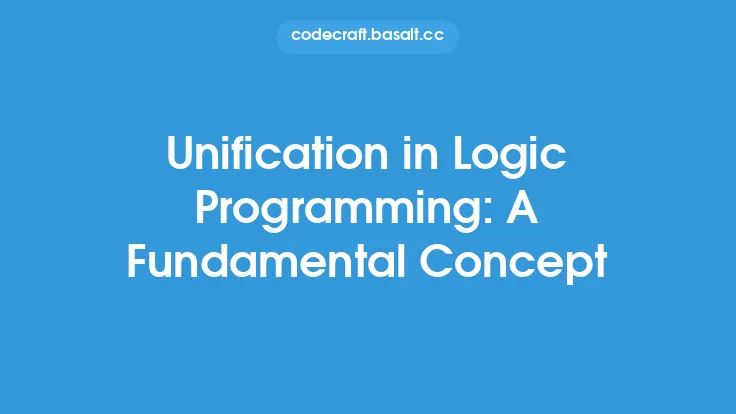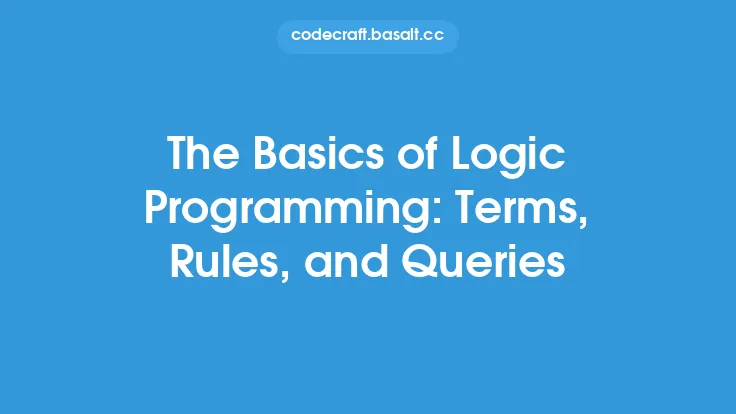Recursion is a fundamental concept in computer science, and it plays a crucial role in logic programming. In logic programming, recursion is used to solve problems by breaking them down into smaller sub-problems of the same type, which are then solved using the same approach. This technique allows logic programs to elegantly and efficiently solve complex problems that would be difficult or impossible to solve using other methods.
Introduction to Recursion in Logic Programming
Recursion in logic programming is based on the idea of defining a predicate in terms of itself. A predicate is a statement that can be either true or false, and it is defined using a set of rules. In a recursive definition, the predicate is defined in terms of a smaller version of itself, which is then solved using the same rules. This process continues until the base case is reached, at which point the recursion stops.
For example, consider the predicate "ancestor," which is defined as follows:
ancestor(X, Y) :- parent(X, Y).
ancestor(X, Y) :- parent(X, Z), ancestor(Z, Y).
In this definition, the predicate "ancestor" is defined in terms of itself. The first rule states that X is an ancestor of Y if X is a parent of Y. The second rule states that X is an ancestor of Y if X is a parent of Z, and Z is an ancestor of Y. This definition is recursive because it defines "ancestor" in terms of itself.
How Recursion Works in Logic Programming
When a logic program is executed, the inference engine uses the rules to derive new conclusions. In the case of recursion, the inference engine uses the recursive definition to derive new conclusions by applying the rules to smaller and smaller sub-problems.
For example, suppose we want to find all the ancestors of a given person, say "john." We can use the recursive definition of "ancestor" to derive the following conclusions:
?- ancestor(john, X).
X = parent(john, mary) ;
X = parent(john, jane) ;
X = ancestor(mary, jane) ;
X = ancestor(mary, bob) ;
...
In this example, the inference engine uses the recursive definition of "ancestor" to derive a series of conclusions, each of which is a smaller version of the original problem. The recursion continues until the base case is reached, at which point the inference engine stops.
Types of Recursion in Logic Programming
There are several types of recursion that can be used in logic programming, including:
- Linear recursion: This type of recursion occurs when a predicate is defined in terms of a single smaller version of itself. For example:
factorial(0, 1).
factorial(N, F) :- N > 0, N1 is N - 1, factorial(N1, F1), F is N * F1.
fib(0, 0).
fib(1, 1).
fib(N, F) :- N > 1, N1 is N - 1, N2 is N - 2, fib(N1, F1), fib(N2, F2), F is F1 + F2.
even(0).
even(N) :- N > 0, odd(N - 1).
odd(N) :- N > 0, even(N - 1).
Advantages of Recursion in Logic Programming
Recursion has several advantages in logic programming, including:
- Elegance: Recursive definitions can be very elegant and easy to understand, as they often reflect the natural structure of the problem being solved.
- Efficiency: Recursion can be very efficient, as it allows the inference engine to solve problems by breaking them down into smaller sub-problems.
- Flexibility: Recursion can be used to solve a wide range of problems, from simple problems like factorial to complex problems like parsing and natural language processing.
Common Pitfalls of Recursion in Logic Programming
While recursion is a powerful technique in logic programming, there are several common pitfalls to watch out for, including:
- Infinite recursion: This occurs when a recursive definition does not have a base case, causing the inference engine to recurse infinitely.
- Stack overflow: This occurs when a recursive definition is too deep, causing the inference engine to run out of stack space.
- Inefficiency: Recursion can be inefficient if the recursive definition is not optimized, causing the inference engine to perform unnecessary computations.
Optimizing Recursion in Logic Programming
There are several techniques that can be used to optimize recursion in logic programming, including:
- Memoization: This involves storing the results of previous computations to avoid redundant calculations.
- Tabulation: This involves storing the results of previous computations in a table to avoid redundant calculations.
- Pruning: This involves eliminating unnecessary branches of the search tree to reduce the number of computations.
Conclusion
Recursion is a powerful technique in logic programming that allows logic programs to elegantly and efficiently solve complex problems. By understanding how recursion works and how to optimize it, logic programmers can write more efficient and effective programs. Whether you are a beginner or an experienced logic programmer, recursion is an essential concept to master in order to get the most out of logic programming.
